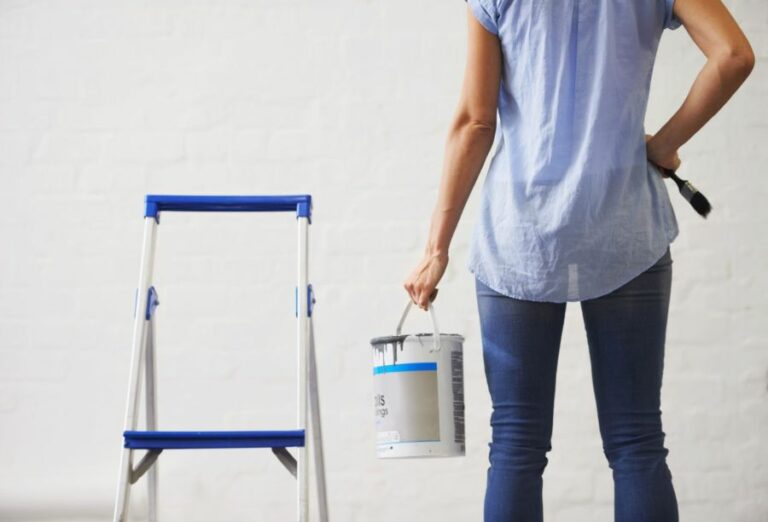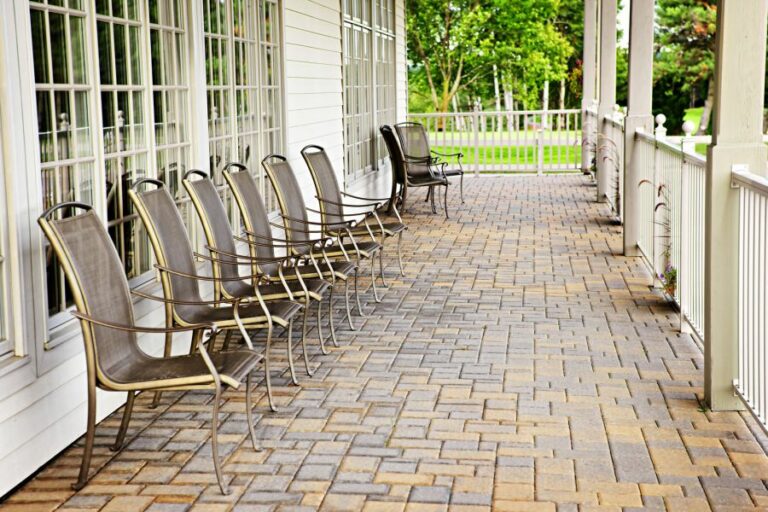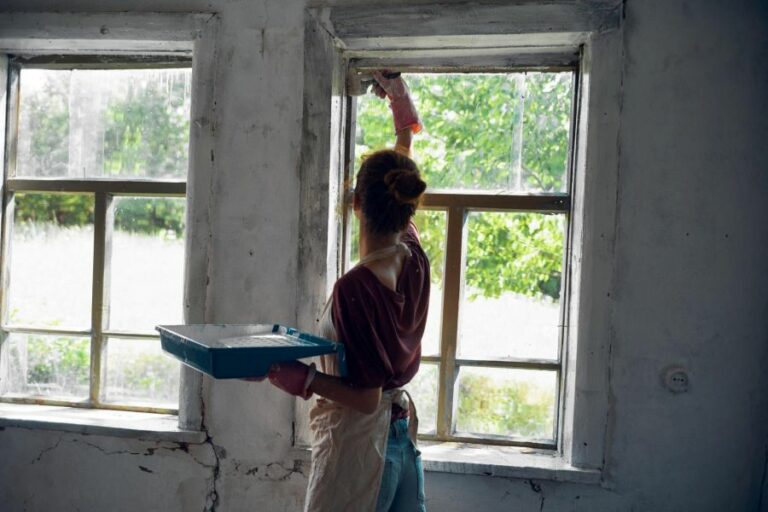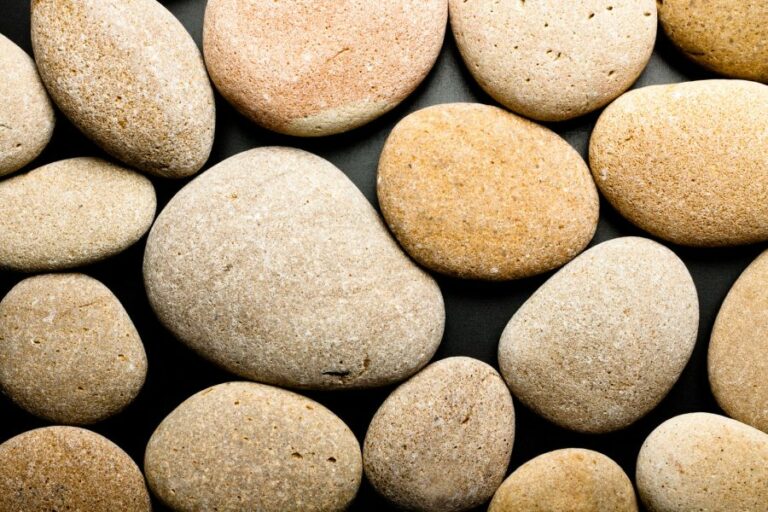Best Paint For Outdoor Metal Art, 25 Things You Should Know
Discover the vibrant world of outdoor metal art and the best paint options to ensure its longevity. Attract attention with your stunning pieces that are true to color and resistant to weather elements, all thanks to the perfect paint that doesn’t just revive but also protects.
Best paint for outdoor metal art:
Choosing the right paint for outdoor metal art is crucial for longevity and durability. Top options include acrylic latex paint, oil-based paint, epoxy paint, and metallic paint, each with pros and cons. Factors to consider when selecting paint include weather exposure, UV resistance, type of metal, and desired finish. Proper preparation and application, such as cleaning the surface, priming, and applying multiple thin coats, are essential for a long-lasting and beautiful finish. Additionally, consider sealing and protecting the artwork with a clear protective sealer.

Curious about selecting the perfect paint for outdoor metal art? Discover top choices for long-lasting, vibrant finishes. Learn the importance of primers and topcoats, and explore tips to protect and preserve your masterpiece in this ultimate guide.
Contents
- 1 Top-Quality Paint for Exterior Metal Artwork
- 2 What Type of Paint Should You Utilize for Outdoor Metal Artwork?
- 3 What is the Most Effective Paint for Outdoor Metal Surfaces?
- 4 Does Acrylic Paint Maintain Adherence on Exterior Metal Surfaces?
- 5 Which Type of Paint Provides the Best Adherence to Metal Surfaces?
Top-Quality Paint for Exterior Metal Artwork
When it comes to outdoor metal art, choosing the right paint is critical to ensure the longevity and durability of your piece. There are many factors to consider when selecting the best paint for your project, such as weather exposure, UV resistance, type of metal, and the desired finish.
• Top Choices for Outdoor Metal Art Paint
1. Acrylic Latex Paint
Acrylic latex paint has become increasingly popular for outdoor metal art due to its versatility and durability. This type of paint is water-based, making it easy to clean up, and it has excellent adhesion on various surfaces, including metal.
Moreover, acrylic latex paint provides a weather-resistant finish that protects your metal art from moisture, rust, and UV damage.
Pros:
- Easy to clean up with water
- Excellent adhesion on various surfaces
- Weather-resistant and UV-protected
Cons:
- May require a primer for optimal adhesion
- Longer drying time than other options
2. Oil-Based Paint
Oil-based paint has long been a preferred choice for outdoor metal artwork, known for its durability and longevity. It’s particularly well-suited for metals prone to rusting, like iron or steel, as it provides a weather-resistant barrier that protects against moisture penetration.
Pros:
- Durable and long-lasting
- Excellent for rust-prone metals
- Can be applied even on slightly damp surfaces
Cons:
- Longer drying time
- Requires solvents for clean up
- May not be as environmentally friendly as water-based options
3. Epoxy Paint
Epoxy paint is an excellent choice for outdoor metal art, offering a strong, durable finish that’s resistant to weather, chemicals, and abrasion. This paint typically comprises two components that must be mixed before application.
Epoxy paint creates a hard, protective surface that resists fading and yellowing due to UV exposure.
Pros:
- Extremely durable and long-lasting
- Resistant to weather, chemicals, and abrasion
- UV-resistant
Cons:
- Mixing can be more complex and time-consuming
- Requires a respirator and proper ventilation during application
4. Metallic Paint
For a unique and eye-catching finish, metallic paint is an excellent option for outdoor metal art. Many metallic paints are formulated with actual metal particles, giving your piece a realistic metallic look. Ensure that you choose a weather-resistant, UV-protected metallic paint suitable for outdoor use.
Pros:
- Beautiful metallic finish
- Available in various shades and colors
- Some options are UV and weather-resistant
Cons:
- May require multiple coats for even coverage
- Can be more challenging to apply evenly
• Application Tips for Outdoor Metal Art Paint
Now that you have an idea of the best paints for outdoor metal art, here are some valuable tips to ensure a successful application:
- Preparation: Before painting your metal art, ensure the surface is clean and free of dirt, dust, and rust. Depending on the metal type, you can use a wire brush, sandpaper, or a chemical rust remover to prepare the surface. Follow up with a metal primer for optimal paint adhesion.
- Paint Application: When painting your outdoor metal art, always apply thin, even coats using a brush or sprayer, following the manufacturer’s instructions. Apply multiple coats, allowing each coat to dry fully before adding more paint.
- Weather Considerations: Before painting your masterpiece, consider the weather conditions. It is best to paint in dry, low-humidity conditions with temperatures between 50F and 90F.
- Sealing and Protecting: Once your outdoor metal art is fully dried, consider applying a clear protective sealer to guard against moisture, UV rays, and other environmental factors that can damage your paint or cause fading.
In conclusion, many excellent choices for the best paint for outdoor metal art include acrylic latex, oil-based, epoxy, and metallic paints. Remember to consider factors such as weather exposure, metal type, and desired finish when choosing the right paint for your masterpiece.
By following the tips and techniques shared, you can ensure a successful, durable, and beautiful finish that will last for years to come.
Paint Brand | Type of Paint | Features |
|---|---|---|
Rust-Oleum | Protective Enamel Spray Paint | Rust prevention, durability, variety of colors |
Krylon Fusion All-in-One | Spray Paint and Primer | Excellent adhesion, maximum rust protection, indoor/outdoor use |
Hammerite Rust Cap | Hammered Enamel Paint | Self-priming, rust resistance, self-smoothing |
Montana Cans | Gold Acrylic Professional Spray Paint | Weather and UV-resistant, high-covering and durable, large color palette |
Majic Paints | Interior/Exterior Satin Paint | Durable, rust-inhibiting, fade resistant |
What Type of Paint Should You Utilize for Outdoor Metal Artwork?
Outdoor metal art is a unique and eye-catching way to enhance your garden, lawn, or any outdoor space. But with exposure to harsh weather elements, it’s crucial to ensure your metal art pieces are protected with the right kind of paint.
• Key Considerations for Outdoor Metal Paint
When selecting paint for outdoor metal art, there are a few important factors to consider:
– Durability
Outdoor metal art is exposed to varying weather conditions, so the paint must be durable enough to withstand sun, rain, and wind. Look for paint specifically designed for outdoor use, as this type will be more resistant to fading, cracking, and peeling.
– Adherence
The paint must be able to bond well with the metal surface to ensure a long-lasting finish. Proper surface preparation and primer application are essential to help the paint adhere properly to the metal.
– Rust Prevention
Metal art pieces are at risk of rusting when exposed to the elements, which can ultimately damage and deteriorate the artwork. Ensure the paint you choose has rust-inhibiting properties to protect your metal art from corrosion.
– Ease of Application
Depending on the outdoor metal art size, you may need to choose a paint that is easy to apply while providing even coverage. Some paints can be directly applied to metal surfaces, while others require a primer before application.
• Types of Paint for Outdoor Metal Art
There are several types of paint available that are suitable for outdoor metal art. Here, I discuss the most common ones and their respective advantages and disadvantages.
– Acrylic Latex Paint
Acrylic latex paint is popular for outdoor metal art due to its durability and excellent adhesion. It creates a waterproof and flexible film that resists cracking, fading, and peeling. This type of paint dries quickly and can be easily applied with a brush, roller, or spray.
- Advantages: Durable, excellent adhesion, flexibility, quick-drying
- Disadvantages: May require primer before application
– Oil-Based Paint
Oil-based paint is another option for outdoor metal art, known for its ability to adhere well to metal surfaces and provide rich, vibrant colors. However, oil-based paint requires a longer drying time than other types of paint, and its application can be a bit trickier.
- Advantages: Strong adhesion, vibrant colors
- Disadvantages: Longer drying time, can be difficult to apply
– Spray Paint
Spray paint can be an excellent choice for outdoor metal art as it provides smooth, even coverage and is often available in many colors and finishes. When using spray paint, it’s crucial to use a type specifically designed for outdoor and metal use.
Ensure to follow the manufacturer’s directions for application and safety.
- Advantages: Even coverage, wide range of colors and finishes, easy application
- Disadvantages: May require multiple coats for optimal coverage, risk of overspray
– Direct-to-Metal (DTM) Paint
DTM paint is designed to be applied directly to uncoated or properly prepared metal surfaces without the need for a primer. This type of paint offers rust protection and durability for outdoor metal art. However, DTM paint is often pricier than other options and may have limited color choices.
- Advantages: No primer needed, rust protection, durable
- Disadvantages: Higher cost, limited color choices
• Additional Tips for Painting Outdoor Metal Art
- Always ensure to clean the metal surface thoroughly before painting. Remove any dirt, grease, or rust to help the paint adhere correctly.
- In some cases, it is recommended to sand the metal surface before painting to improve adhesion lightly.
- Always follow the manufacturer’s instructions regarding the application of paint and any necessary primers.
- Allow sufficient drying time between coats for the best results.
- Consider using a clear topcoat to protect the painted metal art further and increase its longevity.
• Conclusion
In conclusion, several types of paint are suitable for outdoor metal art, and the best choice largely depends on your specific needs and preferences.
Acrylic latex paint, oil-based paint, spray paint, and direct-to-metal paint all have their particular advantages and disadvantages. Always prioritize durability, adherence, rust prevention, and ease of application when selecting a paint type.
Proper surface preparation and following the manufacturer’s instructions will result in a beautiful and long-lasting finish for your outdoor metal art.
Type of Paint | Description | Benefits |
|---|---|---|
Acrylic Latex Paint | Water-based paint that can be easily applied on metal surfaces. | Durable, UV resistant, and weather resistant. |
Oil-based Paint | Paint that contains a base of oil or alkyd, suitable for metal surfaces. | Long-lasting, water resistant, and provides a smooth finish. |
Epoxy Paint | A two-part paint system that creates a hard and durable coating on metal surfaces. | Highly durable, weather resistant, and corrosion resistant. |
Direct-to-Metal (DTM) Paint | Paint specifically designed for direct application onto metal surfaces without the need for a primer. | Saves time, provides excellent adhesion, and offers superior durability. |
What is the Most Effective Paint for Outdoor Metal Surfaces?
When painting outdoor metal surfaces, it’s crucial to choose the right type of paint specifically formulated for metal and provides excellent durability, corrosion resistance, and weather protection.
• Top Paint Options for Outdoor Metal Surfaces
1. Epoxy Paints
Epoxy paints are highly recommended for outdoor metal surfaces due to their exceptional durability, adhesion, and resistance to chemicals, abrasion, and corrosion. These paints form a strong bond with the metal surface, providing a long-lasting and protective coating.
Epoxy paints usually come in two parts: a base (resin) and a hardener (catalyst), which must be mixed before application. Once mixed, the paint has a limited working time before it begins to harden, so it’s essential to work quickly and efficiently.
Recommendation: Rust-Oleum EpoxyShield Professional Floor Coating Kit
2. Acrylic Latex Paints
Acrylic latex paints are another excellent choice for outdoor metal surfaces, as they offer a combination of affordability, ease of use, and longevity.
These water-based paints provide excellent color retention, durability, and resistance to mildew and fading, making them ideal for metal surfaces exposed to intense sunlight or moisture.
One significant advantage of acrylic latex paints is their low VOC (volatile organic compound) content, making them more environmentally friendly and safer for the user.
Recommendation: Behr Premium Direct-To-Metal Semi-Gloss Paint
3. Alkyd or Oil-Based Paints
Alkyd or oil-based paints have been a popular choice for outdoor metal surfaces for many years and for good reason. These paints offer excellent adhesion, durability, and resistance to rust, making them an excellent option for metal structures like railings, fences, and gates.
However, alkyd or oil-based paints emit more volatile organic compounds (VOCs) than their water-based counterparts, making them less environmentally friendly and potentially harmful to the user.
Recommendation: Sherwin-Williams All Surface Enamel Oil Base
4. High-Humidity Paints
Specialized high-humidity paints are an excellent choice for metal surfaces in coastal or high-humidity areas. These paints are formulated to provide excellent corrosion and mildew resistance, ensuring the metal surface remains protected even in adverse weather conditions.
Recommendation: Rust-Oleum Marine Topside Paint
• Surface Preparation Tips
Before painting outdoor metal surfaces, it’s essential to properly prepare the surface to ensure good adhesion and a long-lasting finish. Here are some tips to help you prepare your metal surface for painting:
– Clean and Degrease
Begin by cleaning the metal surface with warm water and mild detergent to remove dirt, dust, and grease. Rinse thoroughly and allow the surface to dry completely before moving on to the next step.
– Remove Loose Paint and Rust
Use a scraper, wire brush, or sandpaper to remove the loose material for previously painted surfaces with loose or flaking paint. Sand the surface to create a smooth, uniform surface and ensure proper paint adhesion.
If the metal surface has rust, it must be removed entirely or treated using a rust converter prior to painting.
– Prime the Surface
Applying a primer is crucial when painting outdoor metal surfaces, as it ensures proper paint adhesion and adds an additional layer of corrosion resistance. Choose a rust-inhibiting primer specifically designed for metal surfaces, such as Rust-Oleum Rusty Metal Primer.
• Tips for a Successful Paint Job
Here are some tips to ensure a successful and long-lasting paint job on your outdoor metal surfaces:
– Use the Right Tools
Choose high-quality brushes and rollers specifically designed for the chosen paint type. This will ensure smooth and even paint application and help avoid brush strokes and uneven coverage.
– Apply Multiple Coats
For optimal protection and durability, apply at least two coats of paint, allowing each coat to dry thoroughly before applying the next one. This will build a more robust, longer-lasting protective barrier for your metal surface.
– Maintain Your Painted Surface
Regular maintenance of your painted outdoor metal surfaces is essential to prolong their lifespan. Keep the surface clean by periodically washing it with mild detergent and water.
Promptly address any chipped or peeling paint and touch up as needed to prevent further damage and exposure of the metal to the elements.
In conclusion, choosing the right paint for your outdoor metal surfaces is essential to ensure their durability and protection against harsh weather conditions.
Consider factors such as the type of metal, the environment, and your preferences when selecting the best paint for your project. Always remember to adequately prepare your surface and follow proper painting techniques for a successful and long-lasting paint job.
Paint Type | Advantages | Disadvantages |
|---|---|---|
Acrylic Latex | Water-based, easy application, quick drying, good adhesion, environmentally friendly | Less durable than oil-based paint, may require more coats |
Oil-Based Paint | Very durable, excellent adhesion, long-lasting, smooth finish | Longer drying time, harder to clean, higher VOCs, not as environmentally friendly |
Epoxy Paint | Extremely durable, chemical resistant, long-lasting, tough finish | Requires precise mixing, difficult to apply, longer drying time, high VOCs |
Direct-to-Metal (DTM) Paint | No primer needed, designed specifically for metal, durable, easy application | Can be less widely available, may require multiple coats |
Rust Preventative Paint | Stops rust from forming on metal, durable, good adhesion | Can require multiple coats, may be specific to certain metals |
Does Acrylic Paint Maintain Adherence on Exterior Metal Surfaces?
As an experienced artist, one question I often receive is whether acrylic paint can withstand the test of time, especially when used on the exterior of a metal object.
• The Durability of Acrylic Paint on Metal
Acrylic paint is known for its versatility, quick-drying properties, and ability to adhere to numerous surfaces, including metal. When applied correctly, acrylic paint can create a strong bond with metal surfaces, making it a durable and long-lasting medium for outdoor projects.
However, it’s essential to consider other factors, such as weather exposure, moisture, and direct sunlight, which can all affect the longevity of your paint job.
– Weather Exposure
Acrylic paint is water-resistant but not entirely waterproof, meaning when exposed to rain, snow, and humidity, it can cause the paint to peel or fade over time.
To better protect an outdoor metal surface against damage from weather exposure, I recommend using an acrylic varnish or sealant that can further protect the paint from the elements.
– Direct Sunlight
The UV rays from the sun can also cause the colors of your acrylic paint to fade over time, especially if a painting is in a location that receives direct sunlight throughout the day.
To help prevent this issue, I recommend choosing high-quality acrylic paint with UV resistance or applying a UV-resistant varnish over the finished paint job.
• Preparing Metal Surface for Acrylic Paint
Properly preparing the metal surface before applying acrylic paint is crucial for ensuring the paint adheres correctly and lasts as long as possible on the surface. Below are the necessary steps to follow when preparing metal for painting:
– Step 1: Clean the Surface
To ensure proper paint adhesion, cleaning the metal surface is essential. Use a mild detergent mixed with water and a sponge or cloth to remove dirt, dust, grease, or any rust on the surface. Rinse the area afterward with clean water and allow it to dry completely.
– Step 2: Sand the Surface
Sanding the surface with fine-grit sandpaper will create a rough texture that promotes better paint adhesion. This step is especially crucial for smooth and glossy metal surfaces. After sanding, wipe off any residual dust with a clean, damp cloth and allow the surface to dry.
– Step 3: Apply a Primer
I highly recommend applying a primer specifically designed for metal surfaces before painting. A water-based acrylic primer is ideal, as it provides a solid foundation for the paint and can help prevent problems with rust or corrosion.
As the manufacturer recommends, allow the primer to dry completely before proceeding with the paint.
• Painting and Finishing the Metal Surface
With a well-prepared surface, you are now ready to apply the acrylic paint. Here are some tips for painting and finishing your outdoor metal project:
– Tip 1: Use a High-Quality Paint
Investing in good-quality acrylic paint is crucial for the durability and longevity of your finished project. High-quality paints often have better pigment concentration and UV resistance, which can help prevent fading and other issues related to weather exposure.
– Tip 2: Apply Multiple Coats
Applying multiple layers of paint can help prevent peeling and fading, as it creates a more robust bond between the paint and the metal surface. Ensure that each coat has dried completely before applying the next one, as the paint manufacturer recommends.
– Tip 3: Seal with a Varnish or Sealant
To protect your finished paint job against the elements, I recommend using an acrylic varnish or sealant designed for outdoor use. Varnishes can provide additional UV protection, water resistance, and abrasion resistance, ensuring your painted metal surface stays looking its best for as long as possible.
In conclusion, acrylic paint can stay on metal outdoors, but proper surface preparation, selection, and sealing techniques are crucial to ensure longevity and durability. Following these recommendations can create a beautiful and long-lasting outdoor metal art piece or design.
Which Type of Paint Provides the Best Adherence to Metal Surfaces?
Painting metal surfaces can be challenging, especially if you’re trying to find the right paint that will adhere effectively and withstand the test of time. Let’s dive in to find the perfect paint solution for your metal project.
• Understanding Different Types of Paint for Metal
Various types of paint are available for metal surfaces, each with unique properties and benefits. The following are some popular options available for painting metal surfaces.
1. Epoxy-based Paints
Epoxy-based paints are known for their excellent adhesion properties and durability. They offer a strong, durable, and chemical-resistant finish to metal surfaces. These paints are suitable for indoor and outdoor applications, as they provide excellent resistance to water and UV rays.
Due to their outstanding performance in harsh environments, you will often find epoxy-based paints used in marine applications.
2. Acrylic Latex Paints
Acrylic latex paints are water-based paints with excellent adhesion, making them suitable for metal surfaces. These paints dry quickly and are resistant to fading, cracking, and peeling. Being water-based, they also offer easy cleanup and are environmentally friendly.
Acrylic latex paints are ideal for interior and exterior metal applications, such as doors, fences, and railings.
3. Oil-based Alkyd Paints
Oil-based alkyd paints have been a popular choice for painting metal surfaces because of their durability and high-gloss finish. These paints form a hard, protective layer on the metal surface, providing excellent moisture, chemicals, and abrasion resistance.
However, they take longer to dry and have higher levels of volatile organic compounds (VOCs) than water-based paints.
4. Direct-to-Metal (DTM) Paints
Direct-to-Metal (DTM) paints are specially formulated to adhere well to metal surfaces without the need for a primer. These paints typically have a high concentration of solids, which helps create a strong, durable finish.
They are suitable for both interior and exterior metal applications, offering excellent corrosion resistance and protection from weather elements.
• Key Characteristics to Look for in Metal Paints
To ensure a successful paint job, consider the following key characteristics when selecting paint for your metal surface:
1. Adhesion
Choose a paint that is specifically designed for metal surfaces, as it will have better adhesion properties, ensuring that the paint sticks and bonds well with the metal.
2. Corrosion Resistance
Metal surfaces are prone to corrosion, particularly when exposed to moisture, chemicals, or harsh weather conditions. Select a paint that offers corrosion resistance to protect the metal surface from rust and deterioration.
3. Durability
A durable paint will endure the wear and tear of daily use and withstand exposure to harsh conditions such as sun, wind, rain, and temperature fluctuations. Consider epoxy-based, acrylic latex, or DTM paints for their long-lasting performance.
4. Application Temperature
Ensure that the paint you select is compatible with the temperature at which you will be applying it. Some paints have specific temperature ranges within which they must be applied to ensure proper adhesion and curing.
• Tips for Painting Metal Surfaces
To achieve a professional and long-lasting finish, follow these tips when painting metal surfaces:
1. Surface Preparation
Begin by properly cleaning the metal surface to remove dirt, grease, and any loose paint or rust. For this task, you can use a wire brush, sandpaper, or steel wool. Proper preparation is essential to ensure optimal adhesion and a smooth, even finish.
2. Primer Application
Although some paints can be applied directly to metal surfaces, using a primer will further enhance adhesion and provide additional protection against corrosion. Select a primer specifically designed for metal surfaces and apply it evenly, following the manufacturer’s instructions.
3. Paint Application
When applying paint to metal surfaces, it is essential to use thin, even coats. This will prevent the paint from sagging, dripping, or creating an uneven finish. Apply multiple coats, allowing each coat to dry in between, as the paint manufacturer recommends.
4. Curing Time
Follow the paint manufacturer’s instructions for proper curing time, as different paints may have varying drying and curing times. Providing adequate time for the paint to cure is crucial to ensuring a durable and long-lasting finish.
• Conclusion
When working with metal surfaces, using the right type of paint is crucial for achieving a durable and professional-looking result. Consider the various types of paint available, such as epoxy-based, acrylic latex, oil-based alkyd, and DTM paints.
In addition, keep in mind important characteristics like adhesion, corrosion resistance, durability, and application temperature to select the best paint for your specific needs.
You can achieve a beautiful and long-lasting finish on your metal project by following proper surface preparation and painting techniques.







